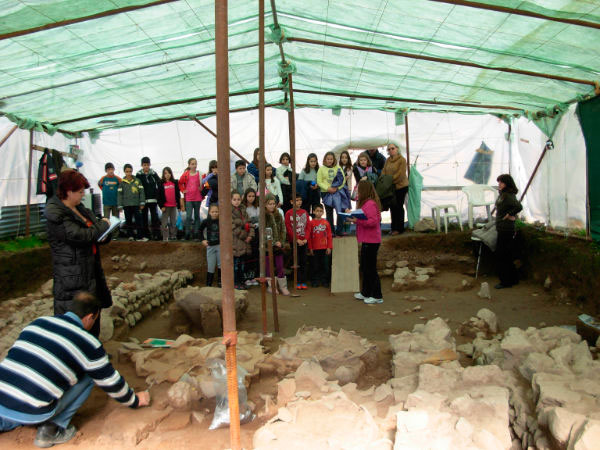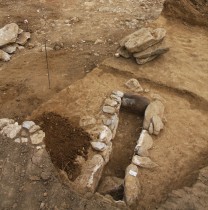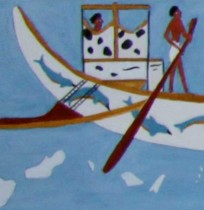Pupils of the local elementary schools have visited the excavation conducted at the “Platania” site of Aghia Paraskevi in Lamia by the 14th Ephorate of Prehistoric and Classical Antiquities since 2006.
It is one of the most important prehistoric sites of Central Greece with uninterrupted habitation from the Early Neolithic period until the Late Bronze Age.
Currently, excavation works focus on unearthing a flourishing settlement’s remains, dating to the Middle-Helladic period (2000-1600 BC). Archaeologists have already brought to light a big number of apsidal and rectilinear buildings on both sides of the roads, impressively well-preserved, regarding their stone foundations and their household equipment, which was preserved in situ underneath the layer of the fallen brick superstructure. Big storage vessels as well as smaller ones for everyday use, stone and bone tools are some of the findings that indicate everyday activities of the inhabitants and their trade and cultural encounters with nearby and distant areas of the Greek mainland and the islands. These contacts were helped by the location of the settlement, which in that period was near the sea, as the palaeo-geographic studies of the Aristotle University of Thessaloniki showed.
The pupils learned about the prehistoric era of the area by the archaeologists and had the opportunity to watch the excavation works and talk to the research team members.
This educational action is included in the framework of a new cooperation project between the 14th EPCA and the Directorates for Primary and Secondary Education. The project aims to sensitize pupils in cultural matters and introduce them to the local history through the findings of archaeological research.




